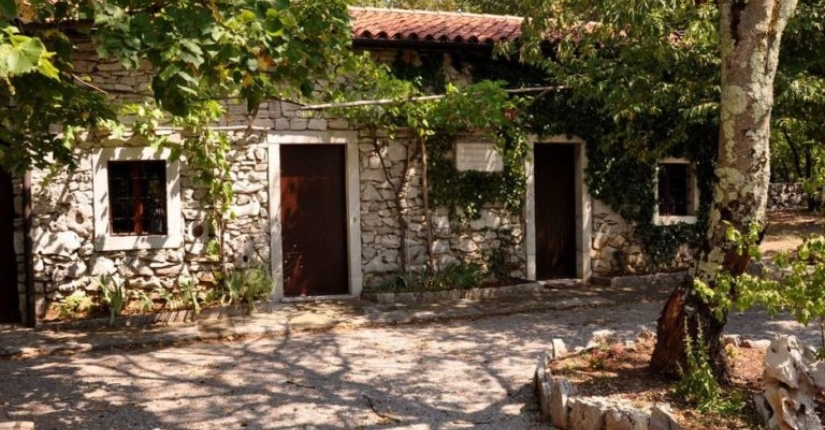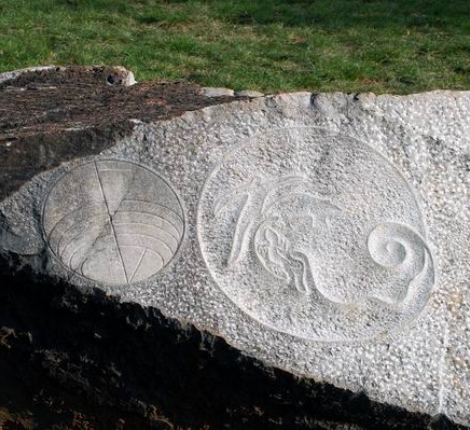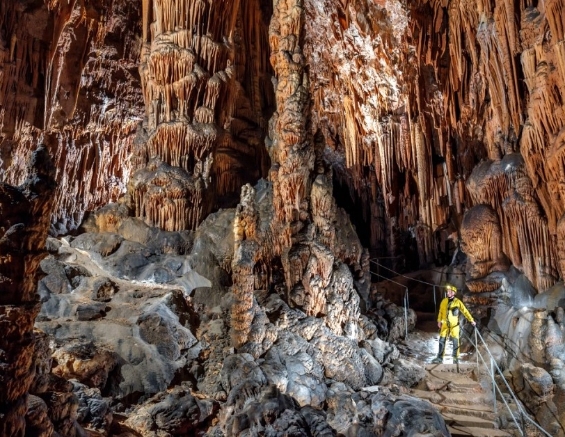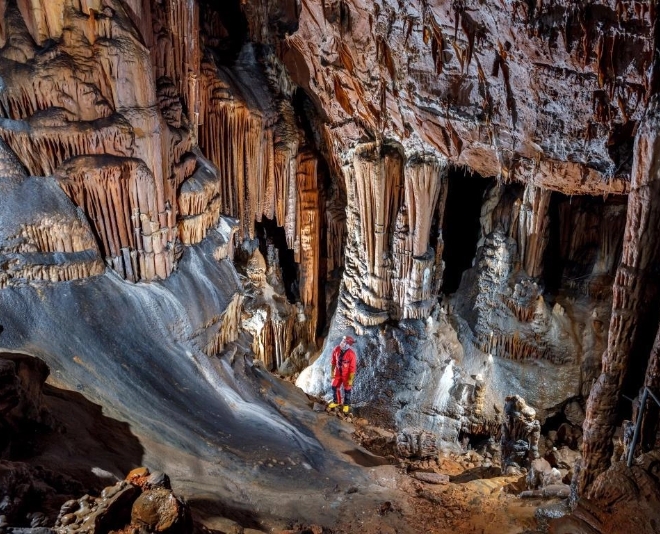The history of the Vilenica Cave, the oldest show cave in Europe
The story of the Vilenica Cave begins with the formation of its subterranean chambers in the prehistory. This was verified by the Chalcolithic ceramics found in the front part of the cave. At that time, the cave was most likely used as a shelter or temporary housing due to the fact that the cave is partially closed and provides shelter from the elements and other dangers. However, the true role of this cave at that time in history is still unknown due to the fact that only individual artifacts were found, but no proper archeological excavations were carried out.
The first recorded tourist visits date back to 1633, which makes the Vilenica Cave the oldest show cave in Europe. It was then that Count Benvenut Petazzi gave the cave as a fief to the parish of Lokev, leaving the earnings from the admissions at his as well as the parish's disposal. Charging admission means trade business and thus it is regarded that from then on, Vilenica cave has been a show cave. In 1809 a door was erected at the cave entrance and the management of the cave was transferred entirely to the parish of Lokev. By the middle of the 19th century, the cave had had the reputation of the biggest, most beautiful, and most visited cave of the Karst Plateau. It's beauty, proximity to the Vienna-Trieste trade route as well as the Lipica stud farm all played a vital part in cave's popularity.
Many poets and writers sang the praises of the cave's abundance of dripstones among them Giuseppe Compagnioni di Lugo with the poem “La Grotta di Vileniza” (1795) and Francesco Trevisani with the poem “La Grotta di Vileniza detta di Corginale” (1802).
The oldest preserved maps of the cave date back to the 18th century: the ground plan sketch by J. A. Nagel from 1748 and a drawing from Mollo's Atlas. Both plans are in fact more depictions than proper maps. The oldest preserved proper map is a watercolor from 1818, painted by Vicenti, measuring 77 x 50 cm. A picture of the speleothems and the pathway with visitors can be found next to the map and a handwritten description of the cave with the author's signature adorn the top. It is presumed that the map was never publicly presented due to the new discoveries in the Postojna Cave.
The discoveries in the Postojna Cave are also the main reason that the Vilenica Cave slowly started fading into oblivion. In 1836 the Lokev community stopped showing the cave and left the whole management of the cave to the local innkeeper, Anton Muha. Società Alpina delle Giulie – Sezione di Trieste, a mountaineering society from Trieste, was managing the cave from 1886 until the end of the Second World War and from 1963 onward Sežana Caving Society (Jamarsko društvo Sežana) has been in charge of the cave.


When the cavers from the Sežana Caving Society arrived at the cave, it was in an extremely bad condition. The infrastructure inside the cave was decaying, a part of the staircase has been carried away by water leaving deposits and dirt. The cavers started working in and around the cave in the middle of 1962 even though they did not have the necessary means. They were volunteers working in shifts as much as the weather and their own free time were permitting them to do so. In roughly 2000 volunteer hours, the cavers secured the exposed areas, repaired the heavily damaged stairs, replaced the missing ones, and cleared and, in some places, remade the pathway. Members from other caving societies (Postojna, Logatec, Idrija, Rakek, Železničar, Novo mesto, Ljubljana), youth from the Iskra company from Sežana, and local youth from Lokev and Sežana all occasionally contributed and on May 19, 1963 the cave reopened for visitors. The opening ceremony was held together with the celebration of the Day of Youth.
In the following years, a small wooden shed (2.8 x 3.2 m) was erected as a storage for tools, equipment, and material cavers needed for their work in and around the cave.
Over the years, the members of the society have performed maintenance of the cave, especially the maintenance of the pathways, electrification of the cave, and construction of stairs and handrails. The members put in about 150 work hours in 1964 and around 400 work hours in 1966 towards the illumination of the cave and maintenance of the pathway. Before electrification of the cave was completed, a diesel generator needed to be used. In the mid-seventies, cavers installed power cables in the cave, upgraded the electrical wiring, repaired the pathway and the handrails, bought a generator, and started building the caver’s home, which was completed in 1975.
The period between 1984 and 1990 brought many improvements to the cave and the area surrounding the cave: the handrail leading from the entrance to the Dance Hall was completed; in some parts of the cave new handrail was added; the power cable leading from the caver’s home into the Dance Hall was replaced; the stage and the dance floor in the Dance Hall were partially repaired; some of the floodlights were replaced; the lightning in the cave was reworked so that the cave can be lit in segments; the caver’s home saw some alterations; plumbing and electricity were installed; sculptures were erected (author is Marko Pogačnik); information boards were made; and the plot saw some landscaping. In 1993 the canopy roof was added to the caver’s home. In 1995 the members decided to fix the parking lots, build restroom facilities and a cesspit due to the increasing number of visitors. Even today, maintenance, especially work related to the caver’s home, repairs to the pathway and the handrails, the electrification of the cave, and landscaping, is still necessary and performed by the members of the Caving Society of Sežana.


Sources:
Grom, S. 1963. “Vilenica pri Lokvi. Ob njeni ponovni otvoritvi 19. maja 1963.” Naše jame 5: 49-52.
Holzmann, H. 1997. “Der plan der Vilenica vom 20. april 1818 – Načrt Vilenice datiran >20. april 1818<”. – Acta Carsologica 26/2 (International Symposium – Mednarodni simpozij >ALCADI ’96<, Postojna 1996): 81-85.
Jamarsko društvo Sežana. 2008. Jamarsko društvo Sežana: 1955-2007, 39-43.
Kavrečič, P. 2015. “Turistični razvoj jame Vilenica in Škocjanskih jam po poročanju planinskih društev in vodnikov v drugi polovici 19. stoletja.” Kronika 63: 547-560.




